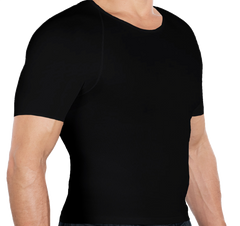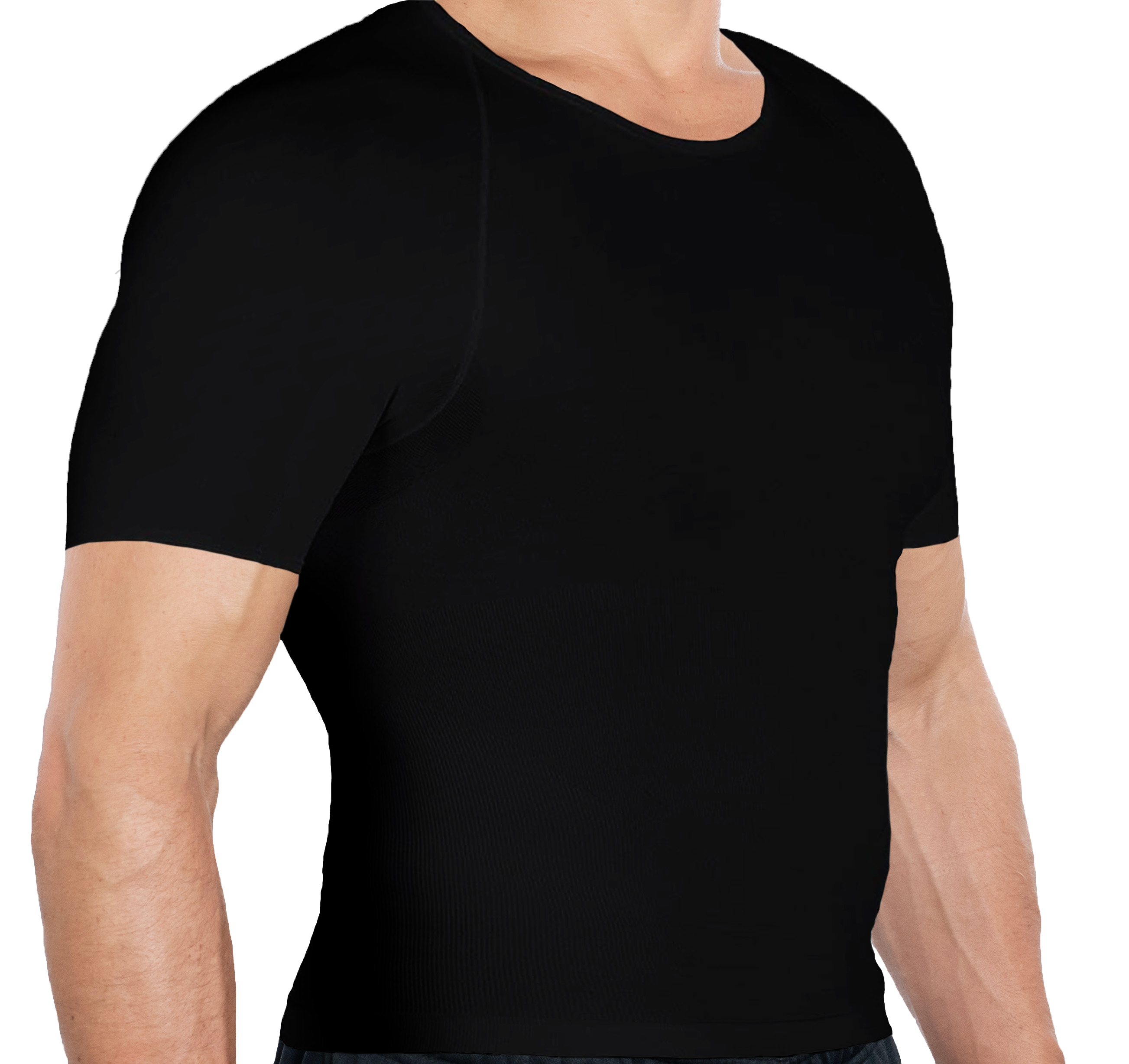For men having gynecomastia, or gyno, can make them feel embarrassed and uncomfortable. Gynecomastia happens when the glandular tissue in a man's breast gets bigger causing the breast to grow and become tender. This can affect guys of all ages, from babies to older men. To make smart choices about treatment and prevention, it's crucial to know what causes gynecomastia and the different ways to get rid of gyno.
This guide covers everything about gynecomastia. You'll learn what causes it how to spot it, and ways to treat it. We'll talk about natural fixes, lifestyle tweaks medical help, and surgery options. We'll also cover aftercare and how to keep your results. With the right know-how and plan, you can beat gynecomastia and feel good about yourself again.
Understanding What Causes Gynecomastia
Many things can lead to gynecomastia. Hormone issues when estrogen and testosterone are out of whack often cause it. This happens a lot during puberty when hormones go crazy. Other things that can cause gynecomastia include:
- Some drugs, like anti-androgens anabolic steroids, and certain antidepressants
- Health issues such as hypogonadism, hyperthyroidism, and kidney or liver disease
- Taking recreational drugs, including marijuana, opioids, or alcohol
- Being overweight, which can boost estrogen production
- Getting older, as testosterone levels often drop with age
Knowing what causes gynecomastia plays a key role in choosing the best way to treat it. Sometimes, fixing the main problem can solve the issue.
How to Spot Gynecomastia
Doctors and patients can spot gynecomastia through self-checks and medical tests. You can check yourself by looking for these signs:
- Bigger breast gland tissue, which might feel like a hard, bouncy lump under the nipple
- Soreness or pain in the chest area
- Unevenness where one breast looks bigger than the other
If you think you have gynecomastia, you should talk to a doctor to get a diagnosis and advice on the best ways to treat it.
Natural Remedies to Treat Gyno
People trying to reduce gyno can try a few home treatments that might help make gynecomastia less noticeable. Here's a list of these natural options:
- Turmeric: This spice has curcumin in it, which can balance hormones and cut down on swelling. To use turmeric to treat man boobs, take 1-2 teaspoons of turmeric powder each day mixed with water or milk.
- Flaxseed: Packed with omega-3 fats and lignans, flaxseed can balance estrogen and reduce inflammation. Eat 1-2 tablespoons of ground flaxseed added to smoothies, yogurt, or oatmeal.
- Cold Compress: Putting a cold compress on the sore breast can ease swelling and pain. Take a cold pack or wrap some ice in a cloth then put it on the breast for 10-15 minutes, a few times each day.
These treatments might help some people, but you should talk to a doctor before you start any new health plan.
How to Get Rid of Gynecomastia During Puberty Naturally
Hormone changes often cause gynecomastia during puberty, and it goes away on its own in a few years. But you can take steps to make gynecomastia less noticeable during this time:
- Keep a healthy weight: Extra pounds can throw off your hormones. Eat well and move your body to stay at a good weight.
- Watch out for fake estrogens: Many things around the house and in food act like estrogen in your body. Stay away from these to help keep your hormones in check.
- Cut down on stress: Too much stress can mess with your hormones. Try to relax with deep breaths quiet time, or stretching.
Don't forget, it takes time during puberty. Gynecomastia often goes away on its own as hormones settle down.
Ways to Live That Can Stop and Shrink Gyno
Besides natural treatments, you can make some changes to your life to help stop and lessen the look of gynecomastia. These include:
- Exercise: Working out has an influence on hormone balance fat loss, and chest muscle strength. Mix cardio and strength training in your workouts, with a focus on chest exercises. Try push-ups, bench presses, and chest flies to build your pecs.
- Diet: Eating a well-rounded diet full of whole foods lean proteins, and good fats helps to keep hormones in check and manage weight. Cut back on processed foods high-fat items, and sugary stuff, as they can throw off your hormones and lead to weight gain.
- Avoid certain medications and substances: When you can, steer clear of meds and substances that are known to cause gynecomastia. This includes anabolic steroids and some recreational drugs.
- Handle stress: Long-term stress can hurt hormone levels. Add ways to cut down stress to your daily routine to help keep your hormones in check.
Changing your lifestyle can help lessen how noticeable gynecomastia is and boost your overall health.
Medical Treatment Options for Gynecomastia
When lifestyle changes and natural remedies don't work, you might need medical treatments to tackle gynecomastia. These treatments include:
- Hormone therapy: Drugs like selective estrogen receptor modulators (SERMs) or aromatase inhibitors can balance hormone levels and lessen gynecomastia's appearance. A doctor should always oversee the use of these medications.
- Medication adjustments: When a specific drug causes gynecomastia, your doctor might suggest changing the dose or switching to a different medication.
- Treatment of underlying medical conditions: Addressing the root cause such as hypogonadism or hyperthyroidism, may resolve gynecomastia.
Surgical Interventions for Gyno
When gynecomastia doesn't get better with changes in lifestyle or medical treatments, surgery becomes an option to consider. Doctors use two types of surgery to treat gynecomastia:
- Liposuction: This operation takes out extra fat from the chest area. The surgeon makes small cuts and uses a thin tube called a cannula.
- Mastectomy: This operation removes gland tissue from the chest area. It aims to create a flatter more masculine chest shape. Doctors do this surgery while the patient is under general anesthesia. Patients might need to stay in the hospital for a short time after the operation.
You should talk about the pros and cons of surgery with a good doctor and think hard about whether the good points outweigh the bad.
Post-Treatment Care and Keeping Results
After you get treatment for gynecomastia, you need to follow the care instructions to heal well and keep the results for a long time. These might include:
- Put on a compression garment: A compression garment can lower swelling, boost blood flow, and help you heal. Your doctor might tell you to wear one for a few weeks after your surgery.
- Don't do hard activities: Stay away from tough workouts lifting heavy stuff, and exercise for a few weeks after surgery. This gives your body time to heal .
- Keep up good habits: To stop gynecomastia from coming back, stick to healthy habits. This means working out eating well-balanced meals, and finding ways to cut down on stress.
- Check in with your doctor: Regular check-ups with your doctor help track how you're doing and catch any problems on.
Conclusion: Beating Gynecomastia with Effective Strategies
Gynecomastia can be tough to handle, but the right knowledge and tactics can help you conquer it. You have many options to reduce gynecomastia's appearance and boost your self-esteem and life quality. These range from natural remedies and lifestyle shifts to medical treatments and surgery.
If gynecomastia gives you trouble, ask a good doctor to find out why it's happening and what treatment works best for you. With time and effort, and by tackling the problem from all angles, you can beat gyno and feel good about yourself again.
If gynecomastia bothers you, talk to your doctor now to look at your options for treatment and start to feel more at ease and sure of yourself.



























